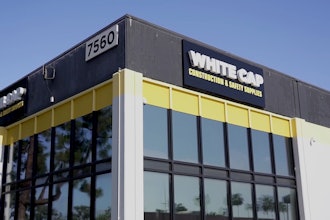Taking the Open Path to Hybrid
Cloud with Dell Networking
and Private Cloud Solutions
an IT Management eBook
1Taking the Open Path to Hybrid Cloud with
Dell Networking and Private Cloud Solutions
DELL NETWORKING AND HYBRID CLOUD
Cloud adoption is on the rise. However, many companies are taking a cautious approach to deployment due to
the relative newness of the technology.
For most companies, cloud offers many benefits including
moreefficient use of IT resources, reduced operating costs,
increased agility to meet changing business needs, and
a platform for IT to transition to a more service-oriented
approach.
Unfortunately, several challenges can prevent a company from
achieving these benefits, including:
• Legacy IT infrastructure is inflexible and cannot be
leveraged to support a cloud architecture.
• In some cases, the existing equipment might be useful for
cloud, but the multi-vendor management solutions either do
not work together or require a great deal of administration
time to carry out even the simplest tasks.
• Security is harder to maintain and manage as resources are
virtualized and hosted across an enterprise or run on an IT
infrastructure outside the corporate firewall.
To address these issues, companies are looking for solutions
that allow them to mix and match cloud offerings from
different vendors and providers.
The solutions must accommodate a variety of deployment
scenarios allowing companies to retain their investment in
installed equipment, while providing a way to take advantage
of newer equipment, technologies, and services.
What is driving cloud adoption?
The transition to cloud is necessary due to several business
factors.
To start, operating costs within the data center are on the rise.
It takes more money and IT staff time to manage computing
and storage resources in today’s complex environments.
Additionally, many companies find that there are costs and
availability issues with data center power and space. This is
happening at a time when IT budgets have remained relatively
flat. As a result, IT is being asked to do more with less.
Second, IT is being called on to support changes in the
fundamental way users work. IT departments now need to
provide a growing mobile workforce with global access to data
and applications from multiple devices and locations.
Third, many business units and departments are making
independent decisions about their IT and application choices.
This has led to a situation where resources are decentralized,
while data and applications are siloed. This makes centralized
decision-making and management difficult.
Fourth, the speed of business has changed. The combination
of the globalization of business, 24x7 user access, and
increased competition forces companies to deliver new
products and services in shorter cycle times compared to just
a few years ago. As a result, IT must be able to respond rapidly
to changing business requirements and quickly deliver the
applications and services required to support such new efforts.
To address these issues, companies and IT organizations
are exploring migrating to a cloud architecture. A cloud-
based architecture will enable the organization to rein in IT
costs, gain the flexibility and agility to deliver new and better
services, and meet rapidly evolving business requirements.
2 DELL NETWORKING AND HYBRID CLOUD
Which cloud is right?
When moving to cloud, there are three basic options: private
cloud, public cloud, or a hybrid cloud that combines elements
of both.
Private clouds enable businesses to take advantage of
the efficiency of cloud computing without exposing their
data and applications to those outside the organization.
Public clouds enable companies to leverage a provider’s
infrastructure, reducing CAPEX and OPEX costs and freeing
up IT staff for other chores. A hybrid cloud environment
helps companies realize the benefits of both. But to take
full advantage of cloud capabilities and benefits in any of
these environments requires an open approach that allows
elements from different vendors to seamlessly work together.
Certainly, server and storage virtualization have helped
overcome some of the challenges of bringing elements
together into a cloud environment. However, the same
type of benefits of virtualization must be extended to the
network and management tools must work across cloud
environments.
Many organizations will find that their network is the
stumbling point to cloud adoption. For years, traditional
network architectures were based on a series of switches
designed to handle common traffic patterns. In some
configurations, there could be up to six tiers of network
infrastructure (i.e., core, distribution, access, Fibre Channel
SAN directors, management, and distributed virtual
switches). At a minimum, a data center would employ core,
distribution, and access switches.
This type of configuration worked well when most of the
traffic was generated by client/server and basic Web
applications. With these applications most of the traffic
running over the network was in and out of the data center
(so called North-South traffic). However, using such a multi-
tiered network architecture can introduce inefficiencies
and latencies with today’s workloads. The reason: A
great amount of traffic now runs between devices rather
than in and out of data centers. In virtualized and cloud
environments, there is a great deal of server-to-server traffic
as virtual machines (VMs) and workloads are shifted to
different machines to keep performance up, maximize use of
computing resources, and minimize the impact of downtime
due to maintenance or hardware failures.
In many cases, companies cannot rip and replace
their existing infrastructure just to gain the benefits of
cloud. Additionally, it is impractical to develop a cloud
infrastructure based on a single vendor’s products. Lines
of business may dictate that a certain vendor’s solution be
used or IT may simply want to bring together best-of-breed
solutions for different aspects of its private cloud. As such,
a cloud solution must support today’s heterogeneous data
center environments, allowing the use of the best solutions
based on business requirements.
Making matters more complex, as IT transforms into a
service-centric organization to meet the demands of today’s
business world, it must deliver services that have ever-higher
service level agreements (SLAs) related to performance and
availability. To accomplish that, IT needs a cloud solution that
provides sophisticated resource monitoring and dynamic
allocation of resources.
Most important, a cloud solution must support hybrid
environments. IT needs the flexibility to make use of the best
platform -- be it private cloud or public cloud -- for every
application.
Dell Networking and Hybrid Cloud
3 DELL NETWORKING AND HYBRID CLOUD
Finally, since business requirements and needs constantly
change over time, a cloud solution must give companies
the ability to move applications from platform to platform
over time. In particular, a solution must support application
portability between on-premises private cloud and public
cloud to simplify the way applications are built, deployed,
and scaled.
The network creates the cloud
Cloud computing promises a new world of IT agility, with
quick deployment of applications to support business needs.
However, today’s cloud solutions are often complex and
unwieldy to manage.
Similar to the way virtualization has allowed IT to separate
the operating system and application from server and
storage hardware, a cloud architecture needs a way to
abstract the network infrastructure to handle changes over
time and to scale. This requirement is leading to the rapid
adoption of software-defined networking (SDN).
Companies that move to SDN have more dynamic, virtualized
network infrastructures. The networks are easier to manage
and are controlled by software instead of the hardware.
The network itself is as consumable as the compute
infrastructure. Any private or hybrid cloud endeavor will
benefit from SDN. Additionally, SDN provides more real-time
intelligence, deep application integration, and high levels of
automation.
Unfortunately, the current reality of SDN is one of a
fragmented marketplace that forces companies to pick
proprietary solutions, locking a company into that one
approach.
“A cloud architecture needs a way to abstract
the network infrastructure.”
Dell takes a different approach overcoming the common
barriers to cloud by enabling customers to leverage existing
investments, add capabilities incrementally, and simplify
their cloud – enabling “Any Cloud” capability. Dell provides
the flexibility to choose from a portfolio of intelligent
platform building blocks, along with reference architectures,
engineered solutions and heterogeneous management
tools.Combine that with cloud services and leading cloud
partnerships and customers have everything they need to
achieve the right balance of on premises, off premises or
hybrid cloud environment for the Future-Ready Enterprise.
Dell Networking and Hybrid Cloud
4 DELL NETWORKING AND HYBRID CLOUD
Central to this strategy is support for cross-vendor platforms
from Microsoft, VMware and Red Hat Openstack cloud
solutions.
At the heart of these Dell solutions is an openness that
allows a company to select the type of environment that
best matches its needs. The openness of the solutions
prevents lock in to a single vendor or technology and
allows for incorporation of new technologies or solutions
as they emerge.
What enables this openness is Dell’s approach to SDN at the
core of the cloud infrastructure – the network. This is part
of the larger Dell Future-Ready Enterprise strategy, which
is expressed via an open approach that allows enterprises
to chart their own course and proceed at their own pace. It
starts with Dell Open Networking solutions, which enable
companies to choose between several operating systems and
open-source tools and administration tools.
The foundation of an SDN strategy begins with next-
generation industrystandard hardware. Dell was among the
first leading vendors to offer “cloud-class” line-rate, dense,
and efficient networking hardware built with industry-
standard merchant chipsets and components. Dell’s
hardware portfolio leads the industry in efficiency, density,
and performance and is optimized for next-generation leaf-
spine and flat architectures. Dell’s own networking solutions
combined with open networking partners’ advanced offerings
deliver the broadest range of next-generation network and
SDN frameworks, ensuring investment protection, direct
access to open networking innovations and true freedom
from proprietary lock-in.
Dell Networking Operating System (OS9) delivers a best-
in-class network OS that includes an industry-standard
command-line interface, ensuring that Cisco-trained
networking-staff can immediately be comfortable and
productive. Additionally, Dell supports next-generation
automation, programmability, and SDN capabilities.
In particular, Dell OS9 supports leading SDN technologies
and frameworks which can be used in three solution
categories: Programmable, overlay, and controller-based.
Furthermore, by virtue of Dell aligning with the Open
Compute Project, companies get access to the rapidly
emerging innovations available through open software
ecosystems, while at the same time enjoying the stability
and assurance of Dell’s service and support, and the breadth
and power of Dell’s global supply chain. Open Networking
provides the greatest breadth of solutions, flexibility, and
investment protection for enterprises that need to move
beyond their legacy networks.
A deeper look at Dell cloud offerings
Dell offers private cloud solutions implemented on dedicated
cloud infrastructure. These solutions are designed to
seamlessly connect with public cloud hosted by a service
provider to provide flexibility. In particular, Dell’s approach to
private cloud virtualizes an IT environment including servers,
storage, and networking. This enables resource abstraction
from the underlying hardware, and pooling of resources for
efficient utilization. Dell solutions establish software control
of the virtualized infrastructure to enable provisioning and
configuration of the right resources. Finally, Dell solutions
let IT implement policy based automation to optimize
service delivery across the cloud platform. This private
cloud architecture can connect to a public cloud provider
hosting cloud services. This allows for a flexible hybrid-cloud
capability.
With its approach, Dell provides an end-to-end cloud solution
for building a private cloud including:
• Flexible modular portfolio of intelligent platform building
blocks
• Heterogeneous management tools
• A complete line of services from design to development,
implementation and support
• A robust community of cloud hosting partners that can host
private or public cloud infrastructure.
Dell Networking and Hybrid Cloud
5 DELL NETWORKING AND HYBRID CLOUD
Dell Networking and Hybrid Cloud
Red Level helps companies create and manage enterprise-grade IT systems, equipping them with the game-changing
technologies they need to perform at their very best. We make businesses run better: More efficiently, more securely,
more profitably. We transform your IT investment into a powerful competitive advantage – the engine of a flexible,
extensible enterprise perfectly matched to today’s business climate, and ready for tomorrow’s.
Thinking about putting Dell Cloud and SDN solutions to work for your company? Red Level is ready to help.
Contact us for more information and a no-obligation consultation.
Furthermore, as part of Dell’s Open Networking approach,
companies get maximum choice and flexibility as they advance
their infrastructure from legacy networks to SDN. By adopting
Dell hardware, companies can take advantage of immediate
performance improvements and still manage their network
through an industry-standard command line interface (CLI).
When companies are ready to take the next step toward
SDN, Dell’s physical network architecture lets them add new
capabilities and keep traditional networking functions in the
same footprint. Dell M, N, S, and Z-series Ethernet fabric
switches, for example, support traditional, programmable,
overlay, and controller-based SDN networking solutions on
one common platform.
In particular, Dell’s latest open, flexible Z- S-Series Ethernet
fabric switches allows it to support companies that approach
SDN from the programmability angle because it supports
the Cumulus Networks Linux-based operating system for
networking hardware, Dell Networking Operating System,
and more. If a virtualization/cloudbased approach to SDN
makes more sense, Dell offers joint solutions with vendors
like VMware, Microsoft, and Midokura. Enterprises that
approach SDN looking for a controller-based approach can take
advantage of joint solutions with NEC and Big Switch Networks,
for example, or explore Dell’s Active Fabric solutions.
Rounding out this portfolio, Dell offers the Dell Cloud Manager,
which helps companies deploy and manage enterprise-
class applications across private, public, and hybrid clouds.
It provides a suite of tools for managing the infrastructure,
including the provisioning, management, and automation
of applications across the leading private and public cloud
platforms.
“SDN provides more dynamic, virtualized
network infrastructures.”
In total, the Dell private cloud solution provides an agile and
flexible platform as a foundation for delivering new capabilities
quickly to market. It allows for seamless integration with
leading public cloud services to bring the full benefits of hybrid
cloud to any organization.
In this way, companies can scale services in response to
market demands and timing. Additionally, Dell hybrid cloud
solutions help companies achieve the lowest possible total
cost of ownership for infrastructure required to deliver critical
capabilities.
REDLEVELNETWORKS.COM | 248.412.8200
24371 Catherine Industrial Dr., Suite 223, Novi, MI 48375
Taking the Open Path to Hybrid Cloud with Dell Networking and Private Cloud Solutions
For most companies, cloud offers many benefits including more efficient use of IT resources, reduced operating costs, increased agility to meet changing business needs, and a platform for IT to transition to a more service-oriented approach. Unfortunately, several challenges can prevent a company from achieving these benefits. The solutions must accommodate a variety of deployment scenarios allowing companies to retain their investment in installed equipment, while providing a way to take advantage of newer equipment, technologies, and services.
Latest in Home
GME Supply Acquires Houston Workwear, PPE Supplier
September 12, 2025
Cutting Tool Maker Opens New North American Headquarters
September 12, 2025
Metalworking Machinery Orders Up More than 20% in July
September 11, 2025






















